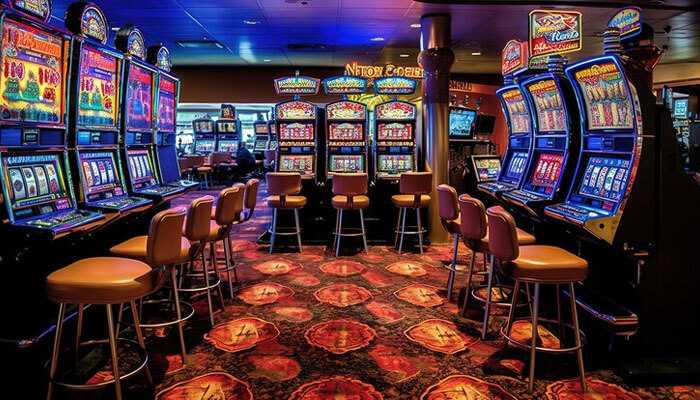Slot Machines, with their vibrant colors, engaging sounds, and the promise of rewards, have long been a staple in casinos worldwide. But with the rise of online platforms, a new debate has emerged: free slots vs. paid slots. While both offer unique experiences, they can have different effects on our brains. If you’re curious about trying free slots before diving into the world of real-money gaming, you can play free slots here.
The Allure of Free Slots
1. Stress-Free Entertainment:
Playing without the risk of losing money allows players to enjoy the game without the associated stress. This can lead to a more relaxed state of mind when the focus is simply on entertainment.
2. Learning Opportunity:
Free slots provide a platform for new customers to families are themselves withth the game mechanics, bonusrounds, and pay tables without any financiall commitment.
3. Dopamine Release:
Winning in any game, even without real money involved, can trigger the release of dopamine, the “feel-good” neuto transmitter. This can create a sense of satisfaction and achievement.
The Thrill of Paid Slots
1. Higher Stakes, Higher Adrenaline:
The possibility of real monetary gain or loss heightens the emotional stakes. This can lead to increased adrenaline, making every win more exhilarating.
2. Risk and Reward:
The brain often weighs potential risks against potential rewards. With real money on the line, this evaluation process becomes more pronounced, engaging more cognitive functions.
3. Enhanced Dopamine Release:
While free slots can trigger dopamine release, the potential for real rewards in paid slots can amplify this effect. The anticipation and unpredictability of the outcome can lead to more significant dopamine surges.
Cognitive Differences
Decision Making:
In free slots, decisions are often made more freely, without much contemplation. In contrast, paid slots can lead to more deliberate decision-making, as real money is at stake.
Risk Assessment:
Our brains are naturally wired to assess risks. This function becomes more active and critical in paid slots, where players often weigh the odds before placing a bet.
Potential for Addiction
It’s essential to note that while both free and paid slots can be enjoyable, the latter has a higher potential for addiction. The brain’s reward system can become conditioned to the highs of winning, leading some individuals to chase losses or bet beyond their means.
The Social Aspect
Free Slots: Many online platforms offering free slots also incorporate social features. Players can connect with friends, share achievements, and even compete in tournaments. This social interaction can stimulate the brain’s social centers, fostering a sense of community and camaraderie.
Paid Slots: While paid slots can also offer social features, the focus tends to shift more towards individual achievements and rewards. The social aspect might be secondary, with the primary emphasis on personal gains or losses.
Time Perception
Free Slots:
Without the pressure of real money on the line, players might find themselves more immersed, losin’g track of time. The brain becomes engrossed in the game, leading to extended play sessions.
Paid Slots:
The stakes involved can make players more conscious of their playtime, especially if they set budgets or limits. The brain might frequently evaluate the time spent versus the rewards gained.
Emotional Responses
Free Slots:
Wins and losses in free slots might evoke milder emotional responses. Players might feel a sense of achievement with wins but might not experience significant disappointment with losses.
Paid Slots:
The emotional highs and lows can be more pronounced. Winning can lead to euphoria, while losses can evoke feelings of disappointment or frustration.
Cognitive Load and Strategy
Free Slots:
Given the lack of real monetary risk, players might not feel the need to strategize or plan extensively. The cognitive load is lighter, focusing more on enjoyment.
Paid Slots:
Players often employ strategies, trying to maximize their chances of winning. This can engage the brain’s problem-solving and strategic planning center, leading to a higher cognitive load.
Sensory Stimulation
Free Slots:
These often come with vibrant graphics, animations, and sounds designed to captivate players. The sensory stimulation can be intense, engaging the brain’s visual and auditory centers.
Paid Slots:
While also visually and auditorily stimulating, paid Slot Machines might also incorporate tactile feedback, especially in physical casinos. The act of pulling a lever or pressing a button, combined with the anticipation of a win, can heighten sensory engagement.
In Conclusion
Both free and paid slots offer unique experiences that engage different parts of our brain. While free Slot Machines provide a risk-free environment to enjoy and learn, paid Slot Machines introduce real stakes, heightening emotions and cognitive engagement. Whichever you choose, it’s crucial to play responsibly and be aware of the effects on your brain.




